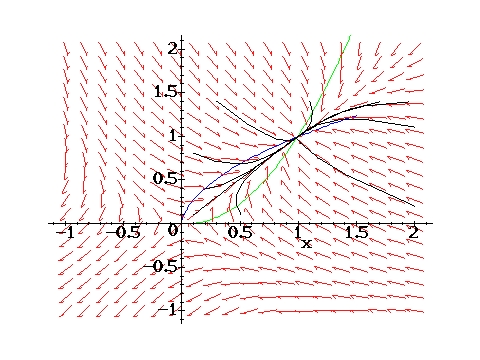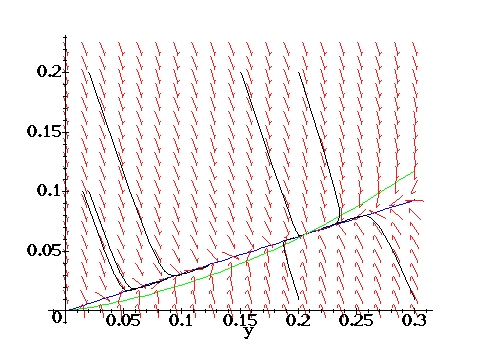
The following two equations are describing two populations of beavers subjected to different environmental factors. Population x is controlled by trapping whereas population y is not. The model allows for migration between the two populations. The dimensionless equations for the "trapped" population (x') and the uncontrolled population (y') are evaluated and used to find the nullclines.
The following graph shows the two nullclines with the parameters
stated in the paper. The non-dimensional parameters in parentheses
were used because x' and y' are dimensionless equations.
This illustrates the response of the system to varying initial conditions.
According to the paper, there is a "zero dispersion line" where the
populations' numbers are equal and, hence, no migration occurs.

